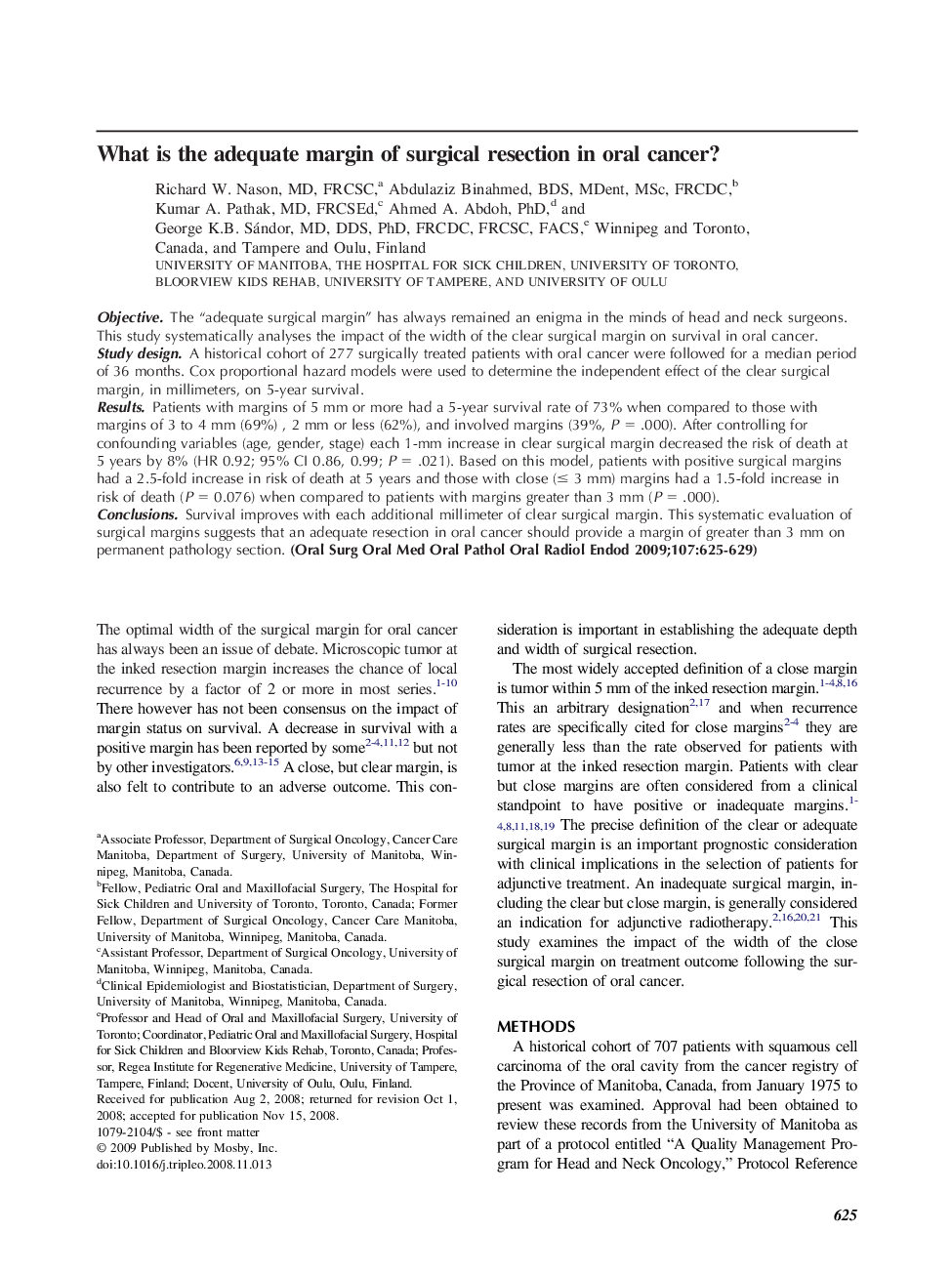| Article ID | Journal | Published Year | Pages | File Type |
|---|---|---|---|---|
| 3168269 | Oral Surgery, Oral Medicine, Oral Pathology, Oral Radiology, and Endodontology | 2009 | 5 Pages |
ObjectiveThe “adequate surgical margin” has always remained an enigma in the minds of head and neck surgeons. This study systematically analyses the impact of the width of the clear surgical margin on survival in oral cancer.Study designA historical cohort of 277 surgically treated patients with oral cancer were followed for a median period of 36 months. Cox proportional hazard models were used to determine the independent effect of the clear surgical margin, in millimeters, on 5-year survival.ResultsPatients with margins of 5 mm or more had a 5-year survival rate of 73% when compared to those with margins of 3 to 4 mm (69%) , 2 mm or less (62%), and involved margins (39%, P = .000). After controlling for confounding variables (age, gender, stage) each 1-mm increase in clear surgical margin decreased the risk of death at 5 years by 8% (HR 0.92; 95% CI 0.86, 0.99; P = .021). Based on this model, patients with positive surgical margins had a 2.5-fold increase in risk of death at 5 years and those with close (≤ 3 mm) margins had a 1.5-fold increase in risk of death (P = 0.076) when compared to patients with margins greater than 3 mm (P = .000).ConclusionsSurvival improves with each additional millimeter of clear surgical margin. This systematic evaluation of surgical margins suggests that an adequate resection in oral cancer should provide a margin of greater than 3 mm on permanent pathology section.
